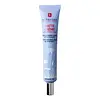What's inside
What's inside
 Key Ingredients
Key Ingredients

 Benefits
Benefits

 Concerns
Concerns

 Ingredients Side-by-side
Ingredients Side-by-side

Cyclomethicone
EmollientDimethicone
EmollientWater
Skin ConditioningVinyl Dimethicone/Methicone Silsesquioxane Crosspolymer
Polymethyl Methacrylate
Dicaprylyl Carbonate
EmollientTrihydroxystearin
Skin ConditioningSilica
AbrasiveDimethicone/Vinyl Dimethicone Crosspolymer
Skin ConditioningPolymethylsilsesquioxane
Isononyl Isononanoate
EmollientTrisiloxane
Skin ConditioningPEG-10 Dimethicone
Skin ConditioningAlcohol
AntimicrobialCetyl PEG/PPG-10/1 Dimethicone
EmulsifyingButylene Glycol
HumectantBis-PEG-18 Methyl Ether Dimethyl Silane
EmollientNymphaea Alba Flower Extract
Skin ConditioningPolysilicone-11
Dimethicone Crosspolymer
Emulsion StabilisingIsoceteth-10
EmulsifyingDisodium EDTA
Mica
Cosmetic ColorantEthylhexylglycerin
Skin ConditioningPentaerythrityl Tetra-Di-T-Butyl Hydroxyhydrocinnamate
AntioxidantTocopherol
AntioxidantPhenoxyethanol
PreservativeParfum
MaskingHexyl Cinnamal
PerfumingAlpha-Isomethyl Ionone
PerfumingLinalool
PerfumingCitronellol
PerfumingGeraniol
PerfumingEugenol
PerfumingLimonene
PerfumingCinnamyl Alcohol
PerfumingCI 77891
Cosmetic ColorantCI 77510
Cosmetic ColorantCyclomethicone, Dimethicone, Water, Vinyl Dimethicone/Methicone Silsesquioxane Crosspolymer, Polymethyl Methacrylate, Dicaprylyl Carbonate, Trihydroxystearin, Silica, Dimethicone/Vinyl Dimethicone Crosspolymer, Polymethylsilsesquioxane, Isononyl Isononanoate, Trisiloxane, PEG-10 Dimethicone, Alcohol, Cetyl PEG/PPG-10/1 Dimethicone, Butylene Glycol, Bis-PEG-18 Methyl Ether Dimethyl Silane, Nymphaea Alba Flower Extract, Polysilicone-11, Dimethicone Crosspolymer, Isoceteth-10, Disodium EDTA, Mica, Ethylhexylglycerin, Pentaerythrityl Tetra-Di-T-Butyl Hydroxyhydrocinnamate, Tocopherol, Phenoxyethanol, Parfum, Hexyl Cinnamal, Alpha-Isomethyl Ionone, Linalool, Citronellol, Geraniol, Eugenol, Limonene, Cinnamyl Alcohol, CI 77891, CI 77510
Water
Skin ConditioningSilica
AbrasivePropanediol
SolventGluconolactone
Skin ConditioningNiacinamide
SmoothingUndecane
EmollientOrbignya Oleifera Seed Oil
EmollientGlyceryl Stearate
EmollientTridecane
PerfumingAmmonium Acryloyldimethyltaurate/Vp Copolymer
Pentylene Glycol
Skin ConditioningSodium Hydroxide
BufferingCetearyl Alcohol
EmollientHydroxyethyl Acrylate/Sodium Acryloyldimethyl Taurate Copolymer
Emulsion StabilisingSalicylic Acid
MaskingButylene Glycol
HumectantSaccharide Isomerate
HumectantSodium Stearoyl Lactylate
Emulsifying1,2-Hexanediol
Skin ConditioningCaprylyl Glycol
EmollientParfum
MaskingPolysorbate 60
EmulsifyingSorbitan Isostearate
EmulsifyingXanthan Gum
EmulsifyingCitric Acid
BufferingSarcosine
Skin ConditioningSodium Citrate
BufferingTocopherol
AntioxidantWater, Silica, Propanediol, Gluconolactone, Niacinamide, Undecane, Orbignya Oleifera Seed Oil, Glyceryl Stearate, Tridecane, Ammonium Acryloyldimethyltaurate/Vp Copolymer, Pentylene Glycol, Sodium Hydroxide, Cetearyl Alcohol, Hydroxyethyl Acrylate/Sodium Acryloyldimethyl Taurate Copolymer, Salicylic Acid, Butylene Glycol, Saccharide Isomerate, Sodium Stearoyl Lactylate, 1,2-Hexanediol, Caprylyl Glycol, Parfum, Polysorbate 60, Sorbitan Isostearate, Xanthan Gum, Citric Acid, Sarcosine, Sodium Citrate, Tocopherol
 Reviews
Reviews

Ingredients Explained
These ingredients are found in both products.
Ingredients higher up in an ingredient list are typically present in a larger amount.
Butylene Glycol (or BG) is used within cosmetic products for a few different reasons:
Overall, Butylene Glycol is a safe and well-rounded ingredient that works well with other ingredients.
Though this ingredient works well with most skin types, some people with sensitive skin may experience a reaction such as allergic rashes, closed comedones, or itchiness.
Learn more about Butylene GlycolParfum is a catch-all term for an ingredient or more that is used to give a scent to products.
Also called "fragrance", this ingredient can be a blend of hundreds of chemicals or plant oils. This means every product with "fragrance" or "parfum" in the ingredients list is a different mixture.
For instance, Habanolide is a proprietary trade name for a specific aroma chemical. When used as a fragrance ingredient in cosmetics, most aroma chemicals fall under the broad labeling category of “FRAGRANCE” or “PARFUM” according to EU and US regulations.
The term 'parfum' or 'fragrance' is not regulated in many countries. In many cases, it is up to the brand to define this term.
For instance, many brands choose to label themselves as "fragrance-free" because they are not using synthetic fragrances. However, their products may still contain ingredients such as essential oils that are considered a fragrance by INCI standards.
One example is Calendula flower extract. Calendula is an essential oil that still imparts a scent or 'fragrance'.
Depending on the blend, the ingredients in the mixture can cause allergies and sensitivities on the skin. Some ingredients that are known EU allergens include linalool and citronellol.
Parfum can also be used to mask or cover an unpleasant scent.
The bottom line is: not all fragrances/parfum/ingredients are created equally. If you are worried about fragrances, we recommend taking a closer look at an ingredient. And of course, we always recommend speaking with a professional.
Learn more about ParfumSilica, also known as silicon dioxide, is a naturally occurring mineral. It is used as a fine, spherical, and porous powder in cosmetics.
Though it has exfoliant properties, the function of silica varies depending on the product.
The unique structure of silica enhances the spreadability and adds smoothness, making it a great texture enhancer.
It is also used as an active carrier, emulsifier, and mattifier due to its ability to absorb excess oil.
In some products, tiny microneedles called spicules are made from silica or hydrolyzed sponge. When you rub them in, they lightly polish away dead skin layers and enhance the penetration of active ingredients.
Learn more about SilicaTocopherol (also known as Vitamin E) is a common antioxidant used to help protect the skin from free-radicals and strengthen the skin barrier. It's also fat soluble - this means our skin is great at absorbing it.
Vitamin E also helps keep your natural skin lipids healthy. Your lipid skin barrier naturally consists of lipids, ceramides, and fatty acids. Vitamin E offers extra protection for your skin’s lipid barrier, keeping your skin healthy and nourished.
Another benefit is a bit of UV protection. Vitamin E helps reduce the damage caused by UVB rays. (It should not replace your sunscreen). Combining it with Vitamin C can decrease sunburned cells and hyperpigmentation after UV exposure.
You might have noticed Vitamin E + C often paired together. This is because it is great at stabilizing Vitamin C. Using the two together helps increase the effectiveness of both ingredients.
There are often claims that Vitamin E can reduce/prevent scarring, but these claims haven't been confirmed by scientific research.
Learn more about TocopherolWater. It's the most common cosmetic ingredient of all. You'll usually see it at the top of ingredient lists, meaning that it makes up the largest part of the product.
So why is it so popular? Water most often acts as a solvent - this means that it helps dissolve other ingredients into the formulation.
You'll also recognize water as that liquid we all need to stay alive. If you see this, drink a glass of water. Stay hydrated!
Learn more about Water